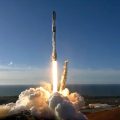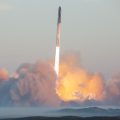
After a series of setbacks, Boeing’s Starliner spacecraft finally took to the skies, marking a significant milestone in commercial spaceflight. Atop a United Launch Alliance Atlas V rocket, the capsule lifted off from Cape Canaveral Space Force Station, successfully carrying two astronauts on its maiden crewed voyage to the International Space Station (ISS).
A Triumph After Multiple Hurdles
Boeing’s journey to this point has been anything but smooth. The Starliner, carrying NASA astronauts Barry “Butch” Wilmore and Sunita “Suni” Williams, reached orbit approximately twelve minutes post-launch. The crew is now en route to the ISS, with an expected docking time of 12:15 p.m. ET on Thursday, culminating a 25-hour pursuit.
This mission is historic as it is the first instance of the Starliner carrying humans. The capsule is slated for a weeklong stay at the ISS, during which Wilmore and Williams will rigorously test its systems, ensuring its readiness for future operational missions.
The Rocky Road to Launch
Starliner’s journey to space was fraught with challenges. The initial two launch attempts were thwarted—first by a problematic valve on the Atlas V rocket’s upper stage Centaur, and then by a last-minute flight computer issue. Further complications arose with a helium leak in the propulsion system, which required detailed scrutiny and rectification.
Despite these setbacks, NASA and Boeing’s confidence remained unshaken. After comprehensive reviews and fixes, the mission received the green light. The successful launch not only demonstrates Boeing’s resilience but also its capability to overcome technical hurdles.
The Competitive Landscape of Space Transport
Boeing’s venture into crewed spaceflight comes in the wake of SpaceX’s significant head start. Since NASA’s Space Shuttle retirement in 2011, SpaceX has successfully conducted nine NASA missions and four private flights. Boeing’s initial uncrewed Starliner mission in 2019 faced significant issues, including a failure to reach the ISS due to software glitches. However, a re-flight in 2022 achieved its objectives despite later discoveries of parachute system flaws and flammable tape within the spacecraft.
A New Chapter in Space Exploration
As Wilmore and Williams navigate the Starliner, they will test critical systems, including life support and communications, and practice manual controls during the docking process. Their feedback will be pivotal for the final certification of Starliner for regular missions.
NASA plans to alternate astronaut flights between Boeing and SpaceX, aiming for approximately biannual missions to the ISS. This collaborative effort between NASA and commercial partners signifies a new era in space exploration, with Boeing and SpaceX leading the charge.
Looking Ahead
Wilmore and Williams’ mission is more than a test flight; it’s a validation of years of development, troubleshooting, and perseverance. Upon their return, anticipated under a parachute canopy in the southwestern U.S., the data collected will undergo meticulous analysis, paving the way for future operational missions.
This launch represents a critical step forward in commercial space travel, highlighting Boeing’s potential to become a key player in this domain despite a rocky start. The successful mission underscores the importance of resilience and innovation in achieving new heights in space exploration.
Disclaimer: The information presented in this article is based on current events and data available at the time of publication to the best of our research and knowledge. It is intended for educational and informational purposes only and should not be construed as professional advice or financial advice or sportsbetting advice or life advice. It is simply our best guess. We at Las Vegas Top Picks do our best to get stories accurate, but sometimes mistakes happen, and it is always good to double-check other sources and media outlets to confirm stories and factual details. The opinions expressed in this article do not necessarily reflect the overall opinion of Las Vegas Top Picks.








